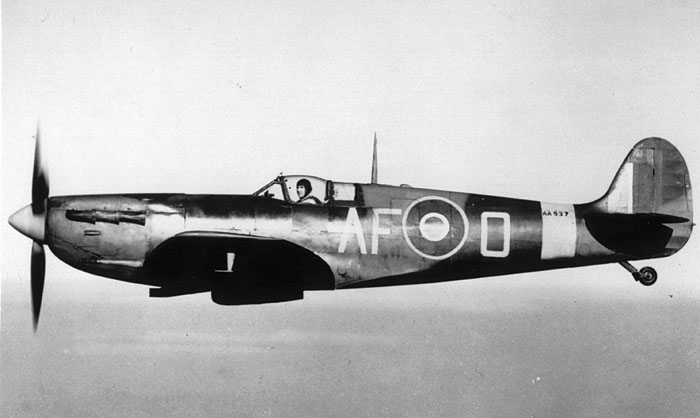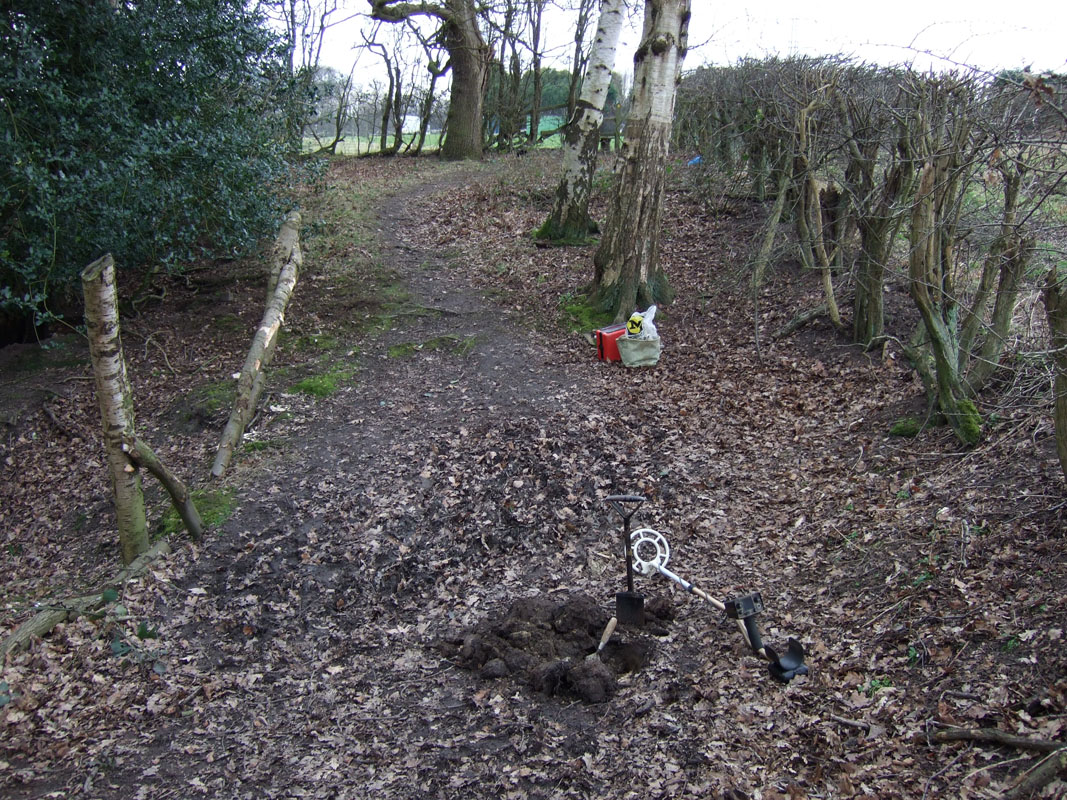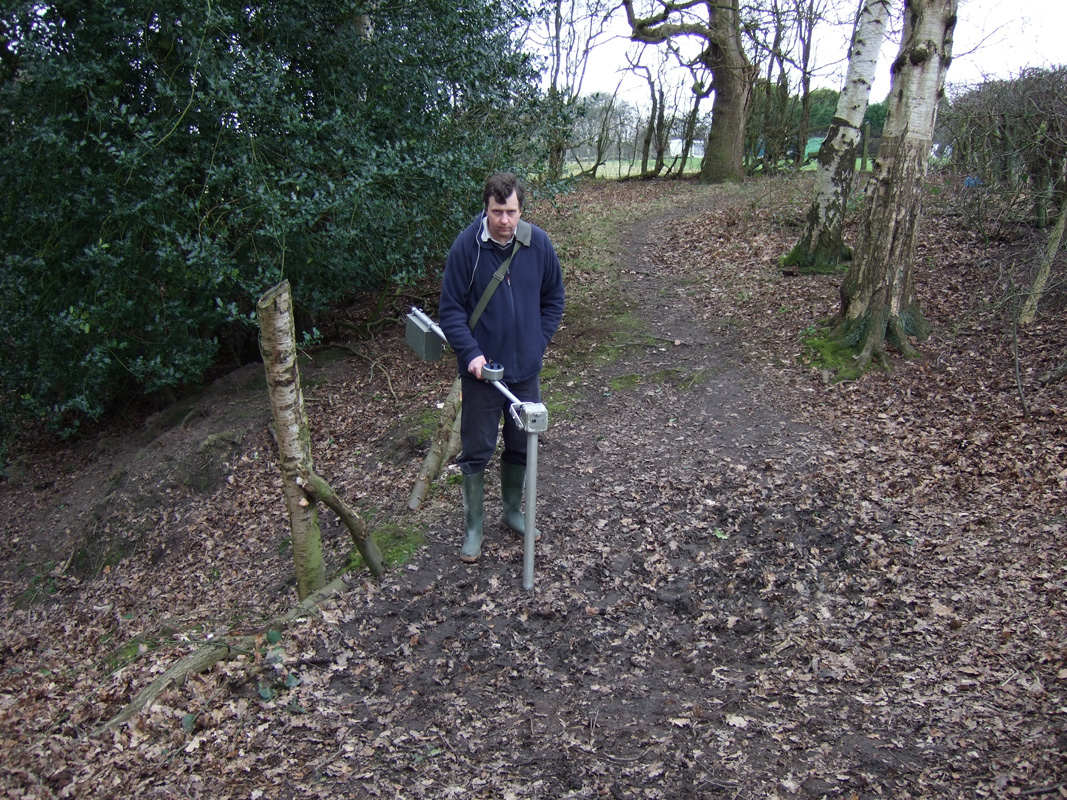 |
Spitfires BL487 & AB873 - Ashley, Nr. Altrincham
14th September 1942 |
Last
updated: 09.12.2017

|
RAF Spitfire LF.Mk.Vb
|
| Type |
Serial |
Unit |
Base |
Duty |
Crew
|
Fate
|
| Spitfire Vb |
BL487 |
No. 880 Squadron |
HMS Blackcap (RNAS Stretton) |
Formation Flying Practice |
S/L H.H. Popham
|
I. |
| Spitfire Vb | AB873 | No. 880 Squadron | HMS Blackcap (RNAS Stretton) | Formation Flying Practice | Lt. J.G.S. Forrest | K. |
 |
| S/L H.H. Popham |
Both
pilots involved in this incident were certainly experienced, having
just returned from almost 12 months onboard the Fleet Aircraft Carrier
HMS Indomitable. Towards the end of this period, in August 1942, No.
880 Squadron had been equipped with 12 Sea Hurricane IBs flying from
HMS Indomitable, which was one of five carriers tasked with providing
air cover for Operation Pedestal - the extremely heavily
protected convoy WS21S, that it was hoped would be able to re-supply
the besieged island of Malta. The convoy first came under attack
on the 11th when one of the carriers, HMS Eagle was sunk by an Italian
submarine and heavy air attacks began. However, it was on the 12th that
the axis forces began to throw everything they had against the convoy,
with numerous air attacks from Italian torpedo bombers and German
Ju87 Stuka dive bombers, as well as high level bombing from Ju88s and
even attempted attacks with experimental Italian radio guided
Savoia-Marchetti SM79 "flying bombs"! Towards the end of the day HMS
Indomitable received three direct bomb hits (all believed to be
SC250Kg) to its flight deck and three near misses that had caused
further damage to the hull below the waterline. Below decks there was
considerable damage and numerous casualties, with direct several
serious fires breaking out and significant flooding. Damage
control quickly dealt with the fires and corrected a 10 degree list
that had developed, but the ship was severely damaged with both
aircraft lifts out of action and a huge hole torn in the
starboard side. Indomitable's airborne aircraft had to land on HMS
Victorious and Indomitable, though underway again within a couple
of hours, was forced to make for the safety of Gibraltar. During the
operation No. 880 Squadron destroyed eight enemy aircraft and damaged
three, but lost three of their own aircraft.
 |  |
Site was identified from eyewitness account and soon confirmed by
small metal detector finds | Foerster Magnetometer confirmed no significant buried wreckage
remains at the crash site |
HMS
Indomitable returned to Liverpool for initial repairs at the end of
August, before being sent to the USA for full repairs and a refit in
September. Her remaining aircraft were flown off and No. 880
Squadron was transferred to HMS Blackcap (RNAS Stretton), south of
Warrington, in Cheshire. After a week's leave the Squadron's
pilots reassembled and in preparation for re-equipping with Seafire
IICs, they began to train on "a handful of old RAF Spitfires, delayed
briefly on their way to the knackers yard" in the words of Hugh Popham
in his later memoires (Sea Flight - first published by William
Kimber & Co. Ltd. 1954). Popham describes "cramming in the
flying" over the first week, often in far from ideal conditions due to
industrial smog reducing visibility. On Monday 14th September, six
pilots from the Squadron were detailed for a one hour formation flying
practice, but one aircraft flown by Lt. John (Johnny) Gordon Scott
Forrest proved to have a minor mechanical problem and took off slightly
later than the rest. As Lt. Forrest was to take lead position, Popham
took this role until he was able to catch up and they were at around
5000 feet, at the upper limit of the smog, when another pilot
signalled to Popham that Forrest was on his way up - the aircraft
having no radio equipment. Suddenly the other pilot's hand signals
became more urgent and Popham realised there was something wrong and a
need for him to take evasive action, so began to pull back on his
control column to gain height. Suddenly there was "a crash and a
shudder" and his aircraft went into a spin and the engine cut out. He
managed to control the spin, but on attempting to restart the engine,
it began to race out of control and shake violently, so he cut the
throttle realising he had lost the propeller. As he got lower he
contemplated a possible forced wheels up landing, but could see
no suitable fields below, so at 1,500 feet he elected to bail out and
jettisoned the canopy. After a bit of a struggle, he managed to roll
his aircraft over and fall clear, at 1,050 feet, with his parachute
opening immediately and he sees his aircraft dive into the ground and
explode. He landed hard, but apart from a touch of backache appeared
unharmed, but on his return to Stretton, the station medical officer
sent him for a precautionary X-ray and he proved to have compound
fracture of the spine and was hospitalised for several months. Sadly
Johnny Forrest was less fortunate and with the tail of his Spitfire
severed in the collision, he had apparently been rendered unconscious,
as his aircraft fell in a flat spin. When found, at Over Tabley, near
Knutsford, his Spitfire appeared to have sustained little further
damage, but Lt. Forrest was dead in the cockpit, having been thrown
against the gun-sight, due to his seat harness being undone. It was
thought he had regained consciousness, shortly before impact and
probably disoriented and unaware of his proximity to the ground, had
undone the harness in preparation to bail out.
 |
 |
| Tell-tale "Daz" was evident just below the surface, across much of the area |
Finds from the search that can be confidently attributed to BL487 |
Finding
the crash site of BL487 proved quite straightforward as apart from
having the pilot's own memoirs to study, unusually the landowner also
recalled the crash - he had been quite young and in the milking shed at
the time and thought a bomb had gone off! However, it also
transpired that although the buried wreckage had been left in situ by
the authorities at the time of the crash, it had been thoroughly
cleared by the farmer for its scrap metal value several years later.
 |
| Clip identified as being from the case for the clockwork Master Contacter timer unit for the Spitfire's "Pip-Squeak" IFF system |
Hugh
Henry Home Popham, was born in Beer, Devon in 1920 and was studying law
at Corpus Christi College, Cambridge when war broke out and he joined
the Fleet Air Arm in 1940. After his recovery from the back injury
sustained in this incident, he returned to flying Seafires with No. 894
Squadron, but felt uncomfortable when flying with other aircraft and
was selected for training as a Deck landing Control Officer ("Batsman")
in which role he served the remainder of the war on various carriers.
Post war, his first wife died in labour and he moved to Barbados
for a time, as a teacher, before returning to Britain a few years later
and taking up writing. He wrote several books and resumed writing
poetry, which had started during the war, to pass the quieter times
whilst at sea. He was five times married (with one son, one daughter,
and one son and one daughter deceased) and died June 1996.
John
Gordon Scott Forrest was born 1917 in Rhodesia and read medicine
at St Catharine's College, Cambridge, where he also excelled at most
sports, especially Rugby, being appointed Captain of the Cambridge
University RFC Team in 1938. He went on to play for the Scotland
National Rugby Union Team and was capped three times. He also played in
the Scotland, Triple Crown winning team, in the 1938 Home Nations
Championship against Wales, Ireland and England. He is commemorated at
the Paisley (Woodside) Crematorium, Renfrewshire, on Panel 2 on the
outer wall of the crematorium chapel.
Acknowledgements:
Mark
Sheldon, Alan Clark, Sturtivant, Ray; Burrow, Mick - Fleet Air Arm
Aircraft 1939 to 1945. Air-Britain Historians Limited. 1995 ISBN
0851302327. Popham, Hugh - Sea Flight, Seaforth Publishing. 1954. ISBN
9781848320550
This page & all articles on this site
Copyright © Nick Wotherspoon 2017








